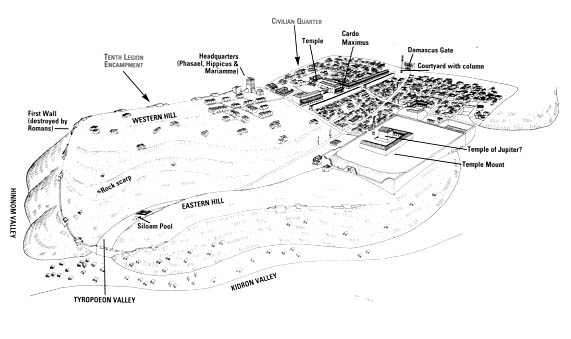Image Details

Leen Ritmeyer
As shown in this reconstruction, Aelia Capitolina was laid out as a typical Roman colony—rectangular in shape and divided into four quadrants with the major street, the Cardo Maximus, extending from the Damascus Gate in the north to the southern edge of the civilian quarter. Three towers, Phasael, Hippicus and Mariamme marked the Tenth Roman Legion’s headquarters on the western hill of Jerusalem. The small detachment of soldiers camped all over the southern part of the hill. A Roman temple or statue, dedicated to Jupiter, may have stood on the site of the destroyed Jewish Temple.
Throughout the city, signs of the Roman destruction were apparent, including the scattered stones of the First Wall, which had protected Jewish Jerusalem, and the charred remains of houses in the once elegant Upper City.
